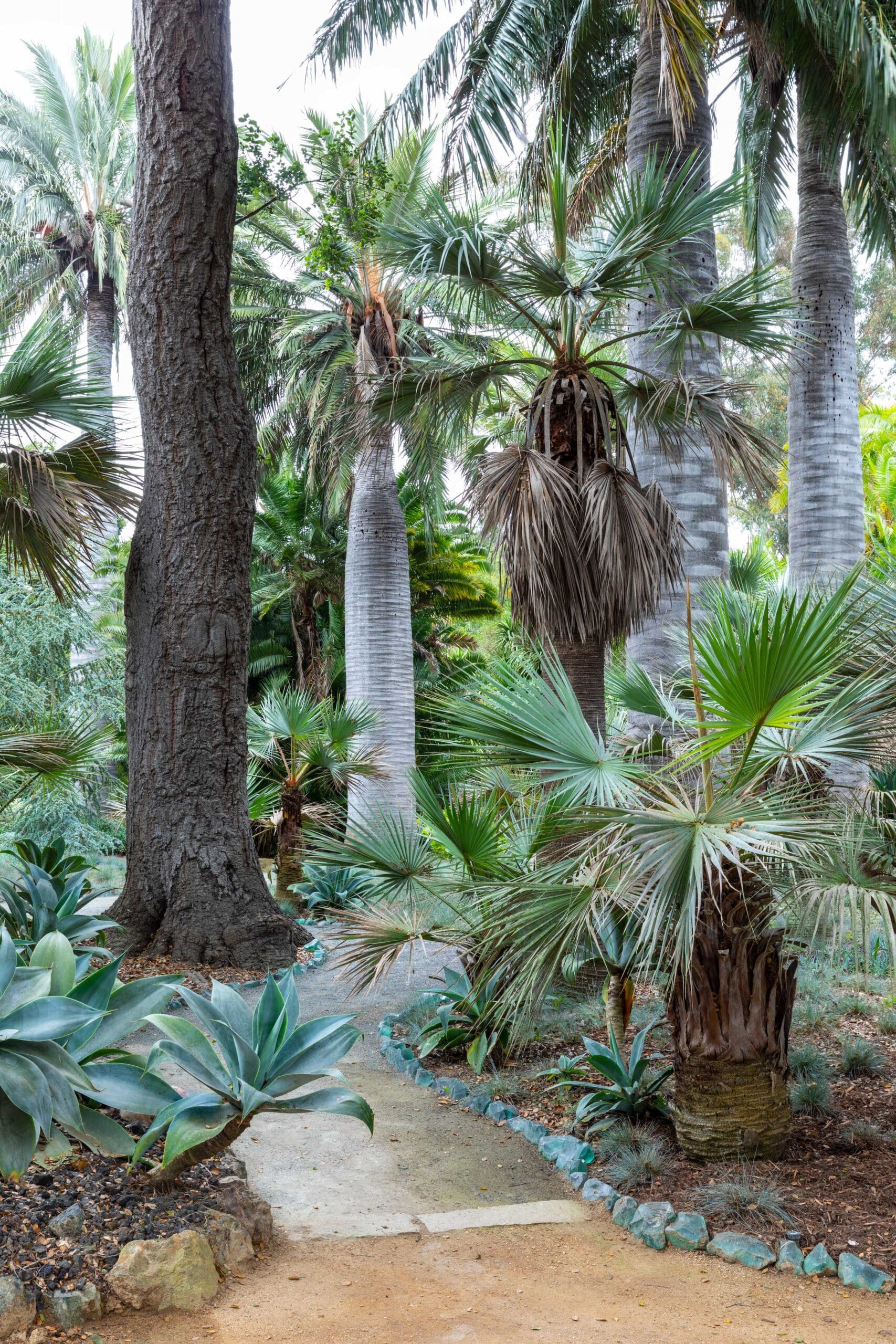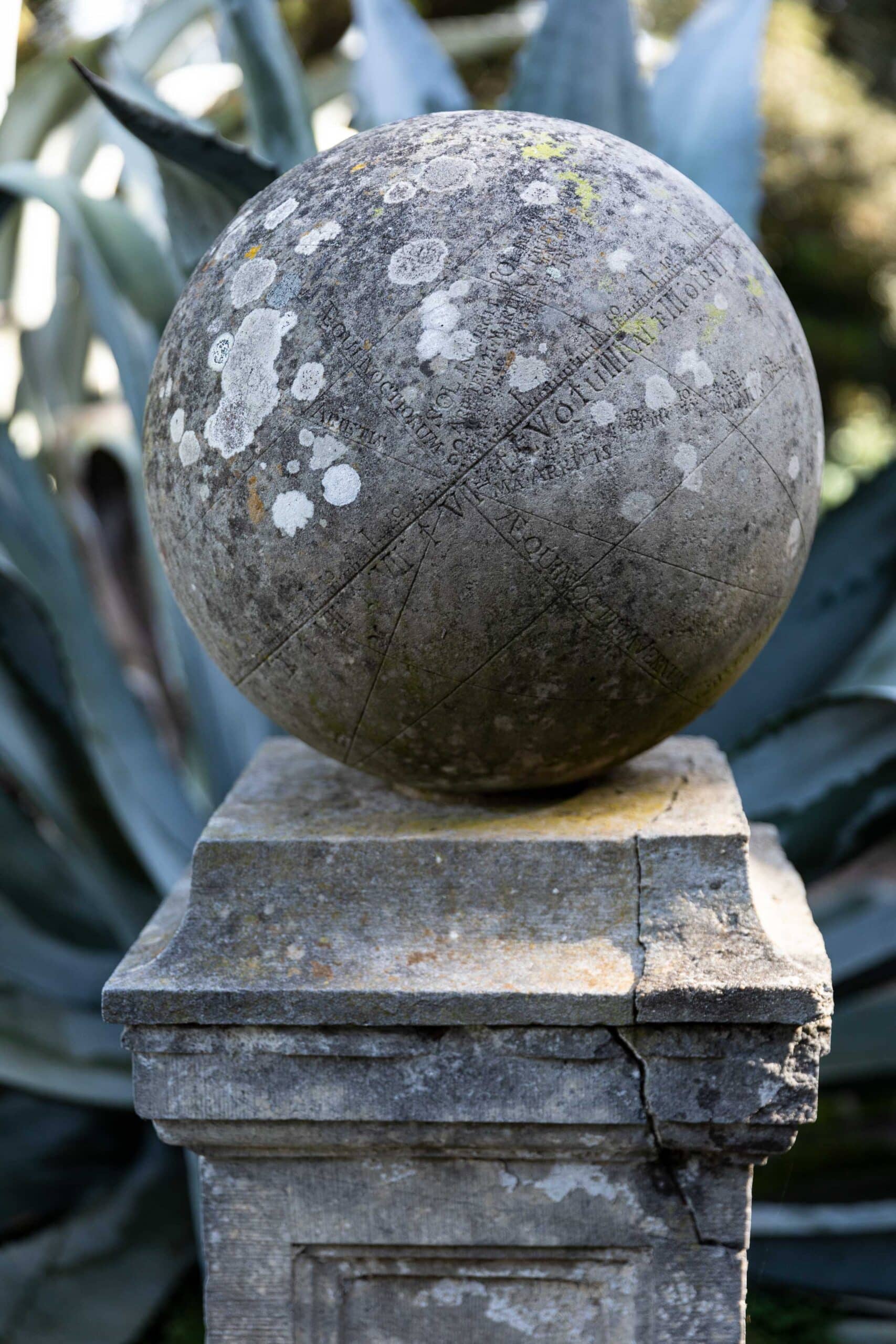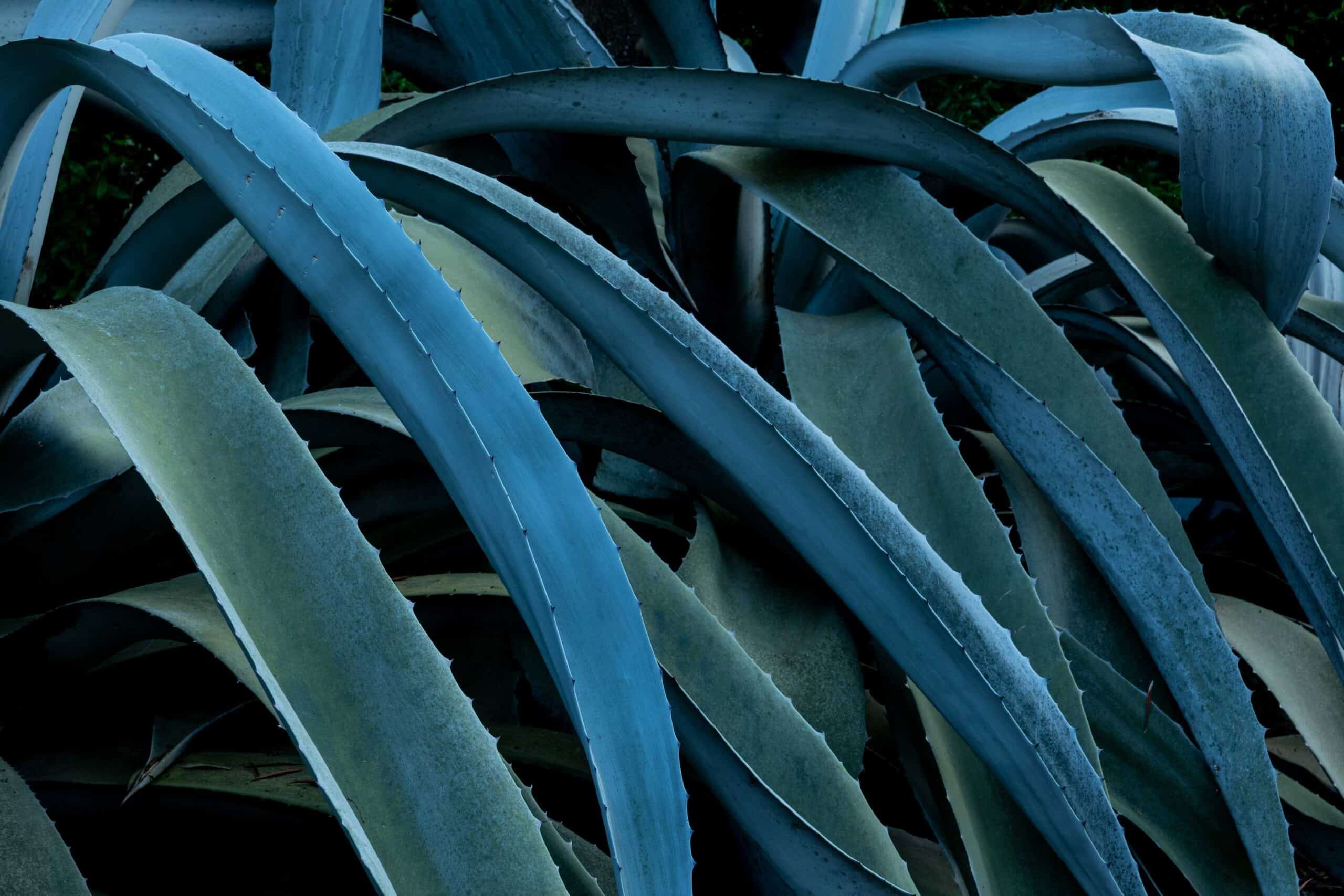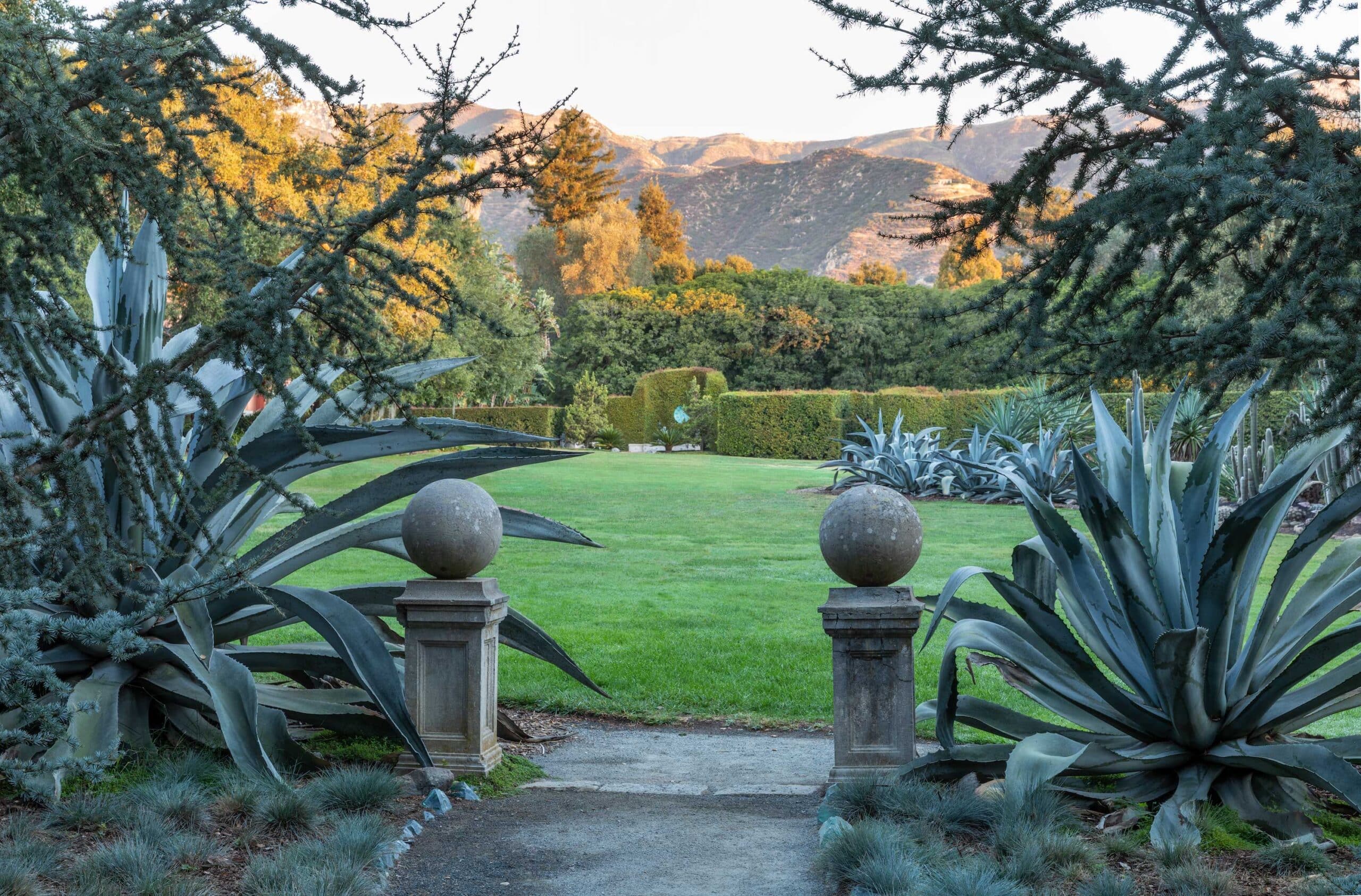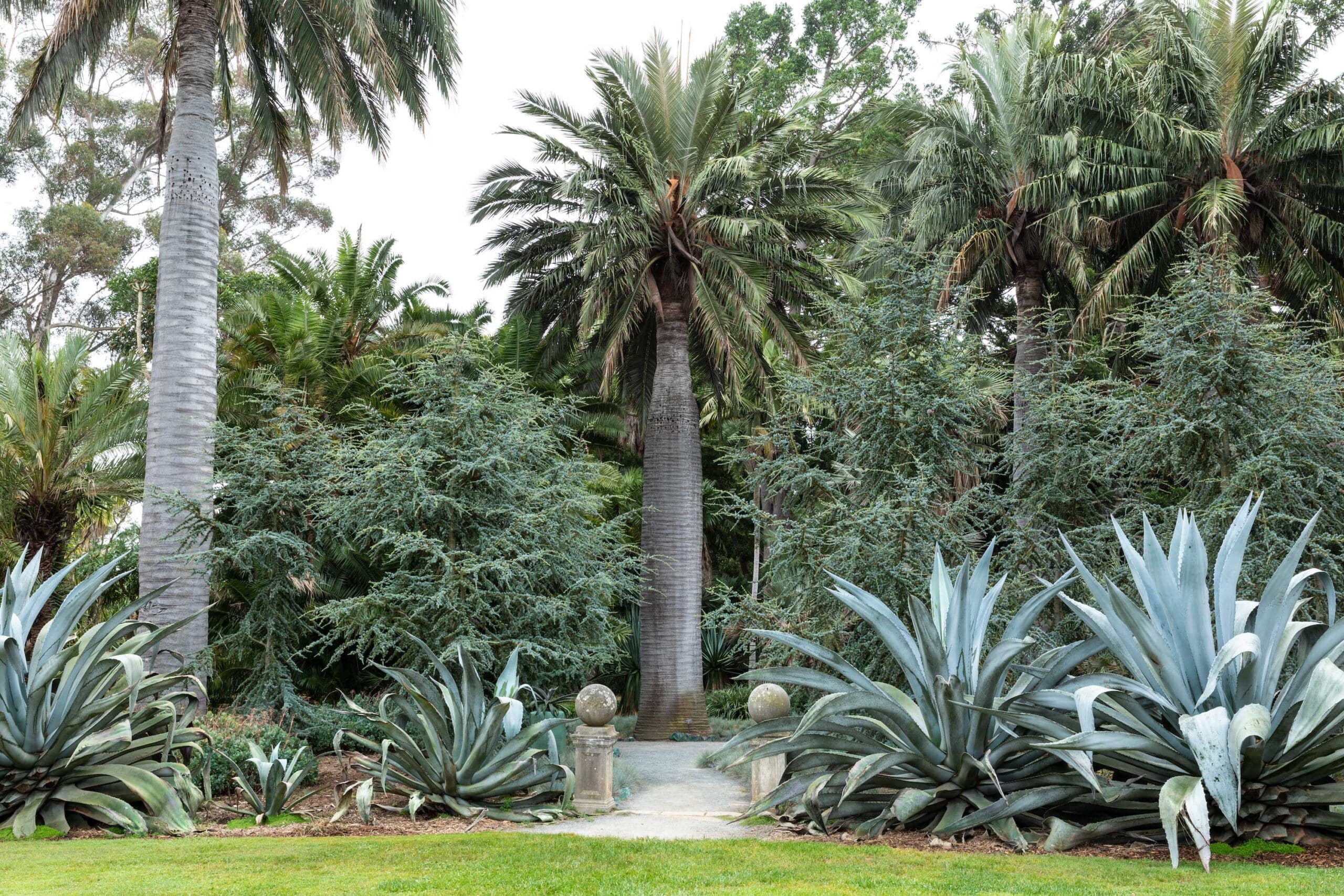The public tour season for 2024 is now closed. The Garden re-opens for public tours on February 15. We look forward to welcoming you in 2025.
Blue Garden
The Blue Garden started in 1948 as a silver garden with the planting of blue Atlas cedars by Madame Ganna Walska
BLUE GARDEN
The Blue Garden started in 1948 as a silver garden with the planting of blue Atlas cedars by Madame Ganna Walska. It evolved into the Blue Garden as she added blue-foliaged plants to complement the cedars. At the time, color-themed gardens were considered quite chic, and at its prime in the mid-1950s Lotusland’s Blue Garden was celebrated as one of the most fascinating gardens in California. It is as relevant now as it was in Madame Walska’s era. Plants living in the Blue Garden are drought-tolerant and thrive in Santa Barbara’s dry Mediterranean climate.
the
Noteworthy
Features
Blue Atlas Cedar (Cedrus atlantica ‘Glauca‘)
This is a true cedar native to the Atlas Mountains in northern Africa (Morocco and Algeria). True cedars are different from the scaly-leaved “false cedars” of the United States, which are actually in the cypress family. They can be identified as true cedars by their upright, barrel-shaped cones.
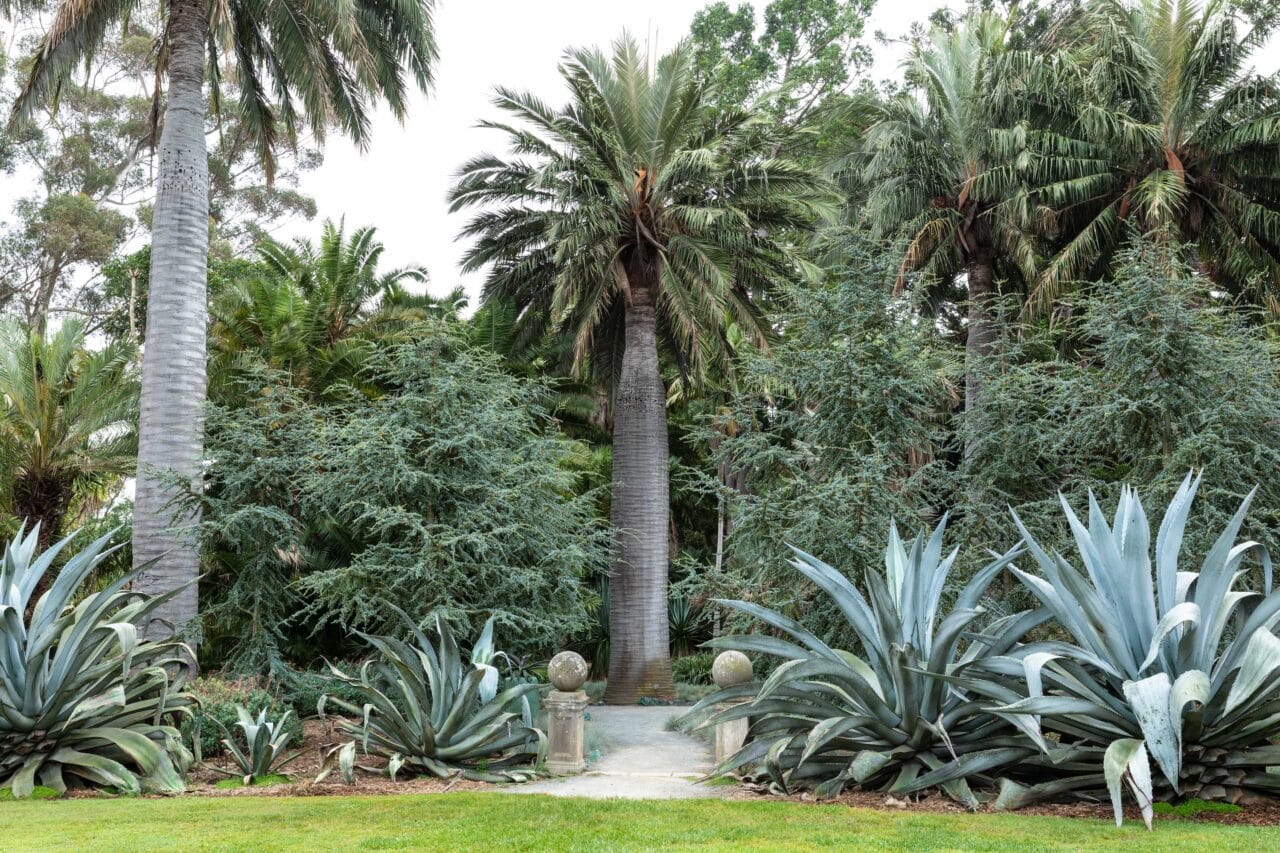
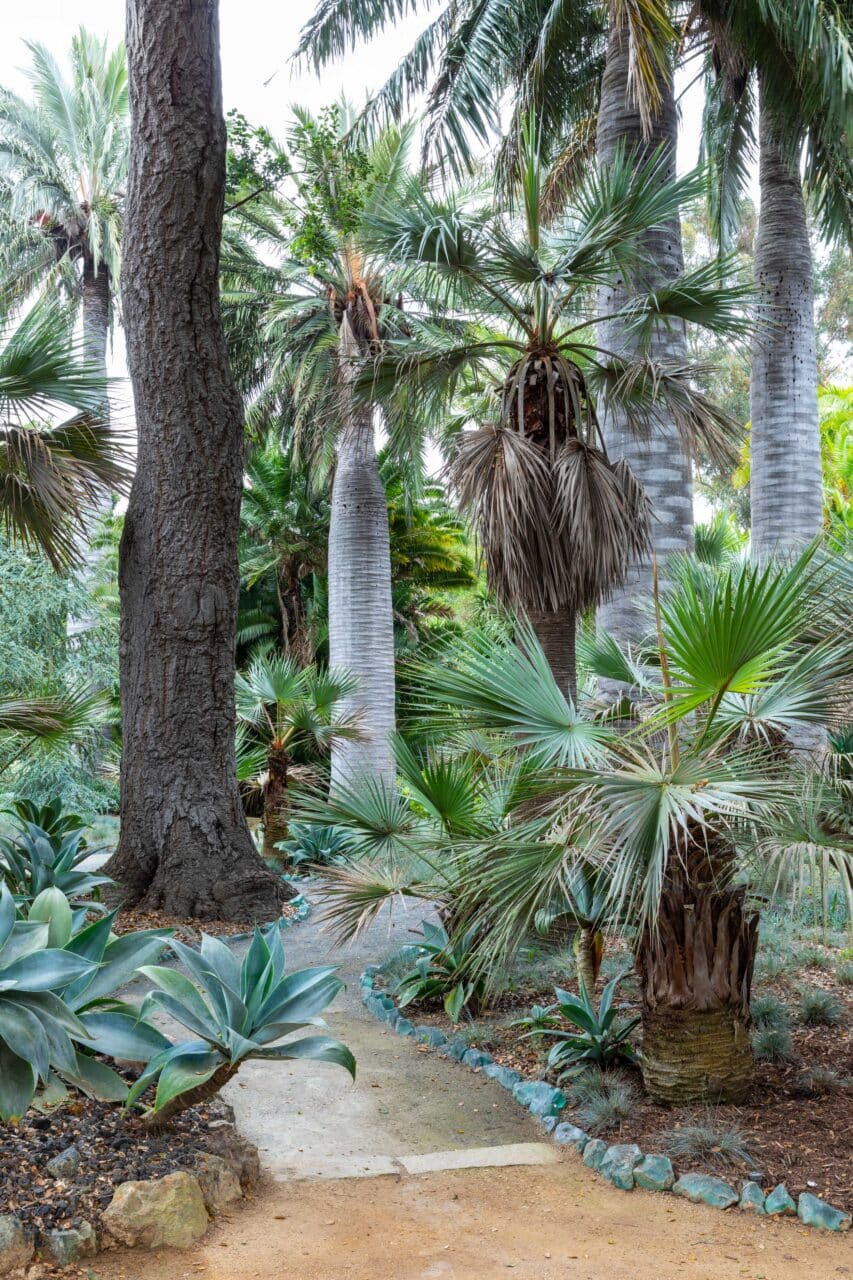
Acorn Woodpecker Granary
Look up to see the holes covering the trunk of the Chilean wine palm (Jubaea chilensis). If you have binoculars, you will likely see individual acorns in many of the holes. Acorn woodpeckers often choose a tree, phone pole, or even a house to use as a granary to store food. These colorful birds are unique in the avian world. They are the only creatures that carve a hole for each nut they store. They are also the only woodpeckers who live in family-based clans ranging from two to 16 birds. As you walk this garden, listen for their unique “waka-waka” calls.
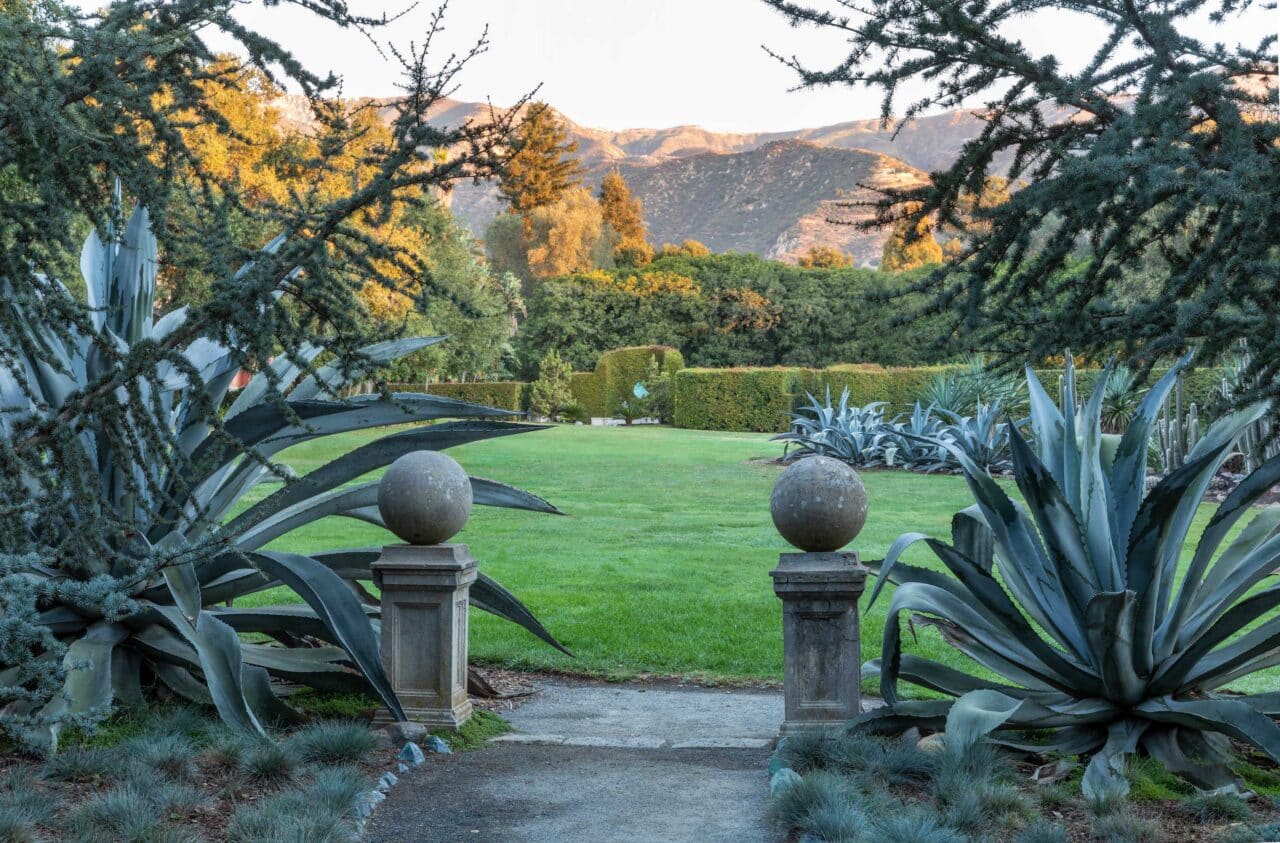
Notable Species
Blue Plants: Festuca glauca – blue fescue (Europe), Senecio mandraliscae – chalk sticks (South Africa), Cedrus atlantica ‘Glauca’ – blue Atlas cedar (Atlas Mountains of Morocco), Jubaea chilensis – Chilean wine palm (Chile), Brahea armata – blue hesper palm (Mexico), Agave attenuata ‘Boutin Blue’ (Mexico), Agave americana (Mexico), Agave franzosinii (unknown origin)
Other Plants: Agathis robusta – Queensland kauri (Papua New Guinea to Queensland, Australia); Araucaria bidwillii – bunya-bunya (Queensland, Australia); Araucaria cunninghamii – hoop pine (Queensland, Australia); Fascicularia pitcairnifolia (Chile)
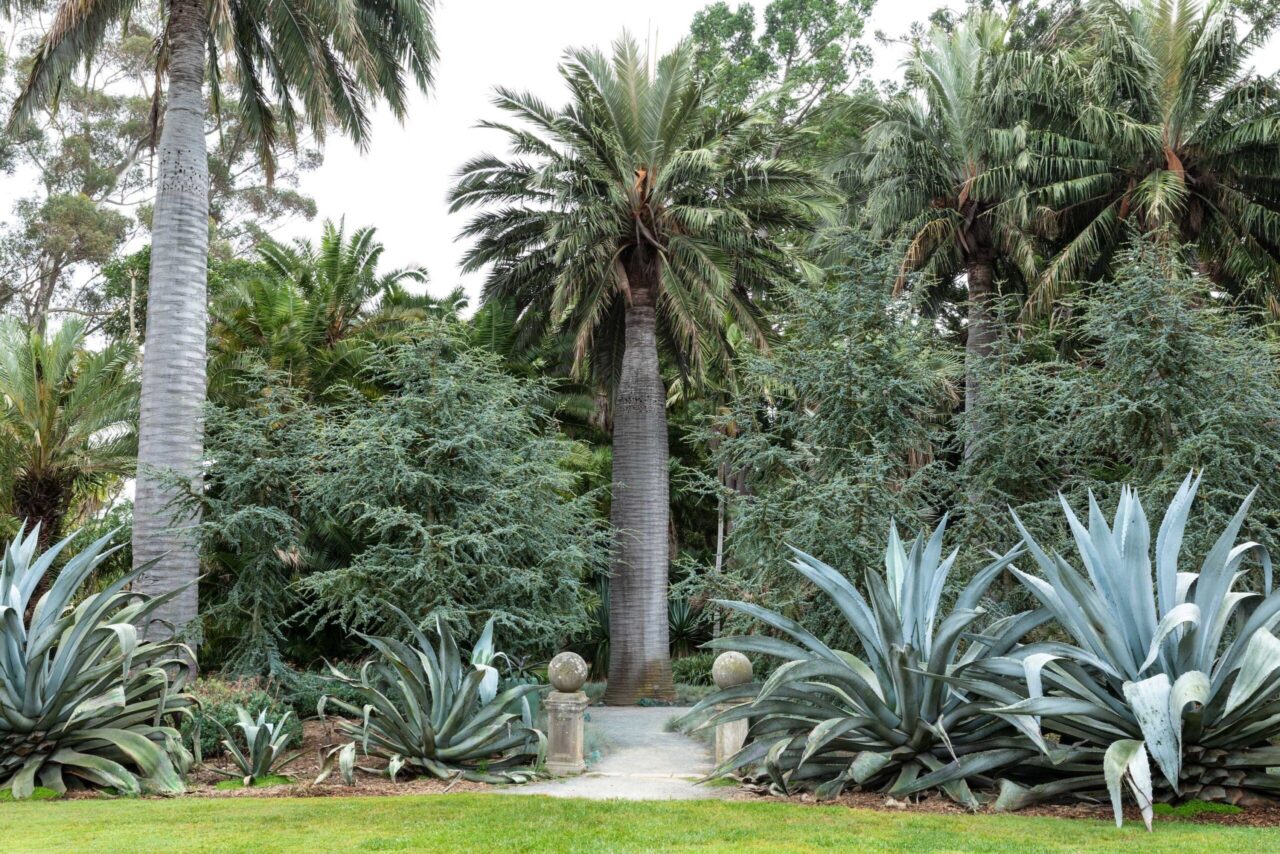
DID YOU KNOW?
Why are some plants blue?
Many plants have adapted to intense sun by making their own kind of sunscreen, a thick waxy coating known as a cuticle. Underneath this layer is a perfectly green plant.


